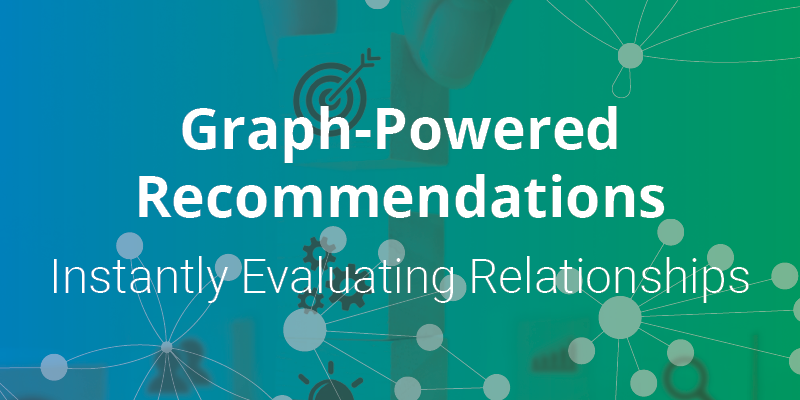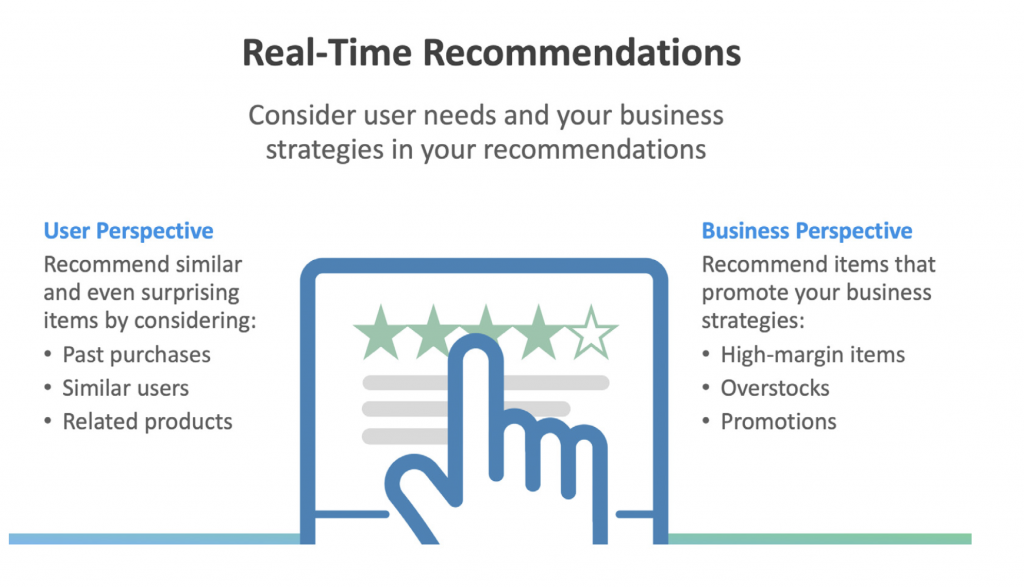Graph-Powered Recommendations: Instantly Evaluating Relationships

Senior Director of Global Solutions, Neo4j
2 min read

Recommendation engines have become a crucial component of modern sales, finance, logistics and human resources applications. This core need has triggered a shift from relational and big-data approaches to graph-based technologies that are purpose-built to handle the rigorous demands of real-time recommendations.
This week, in blog two of our five-part series on graph-powered recommendations, we underline some ways in which graph technology is superior for recommendations. In addition to discussing relational approaches, we explore data lakes and algorithmic approaches and show how native graph is the right answer for real-time recommendations.
In subsequent weeks, we will look at why graph technology is superior for modern recommendations and how you can get started quickly with the Neo4j Intelligent Recommendations Framework.
Graph Technology Is Superior for Recommendations
The technology of choice for recommendation engines is Neo4j, the world’s leading graph database.
Graph technology is superior because it is specifically designed to manage not just mountains of data (of customers, products, services, prices, job openings, etc.) but also data relationships — the details of how and why people, products, services, preferences, likes, dislikes, jobs, events, and everything else in the real world are related.
Real-time recommendations must instantly assess the current business context, match user profiles and patterns, capture new behaviors for future recommendations, evaluate alternatives, and then recommend next steps. Matching business, demographic, historical and session data like this – in real time – is trivial for Neo4j.
Relational Approaches
Legacy relational database technologies track only that two things are related, and don’t track the context or direction of that relationship. It’s ironic that relational databases are in fact, poor at capturing data relationships.
In sharp contrast, graph-powered recommendation engines aren’t crippled by semantically poor relational data models and slow, expensive, one-way, unpredictable table JOINs. Graphs are rich in meaning, highly flexible and run at blazing speeds – fast enough to support real-time recommendations.
Data Lakes and Algorithmic Approaches
To address the problems of relational methods, data scientists have used data-lake and big-data technologies like Hadoop and HDFS. But these approaches must first interpret vast quantities of data into meaningful models, and then execute recommendation algorithms within the models. Since all this takes time, such approaches are not viable solutions for real-time recommendations in which busy users require split-second suggestions or move on to their next task.
Native Graph Answers the Call
Neo4j’s native graph technology is the right solution for real-time recommendations for many important reasons, including:
- Graph models of data entities and their relationships are already connected in the correct context when accessed by applications
- Graph models allow relationships to be weighted
- Queries traverse native-graph datasets instantaneously
- Native-graph algorithms traverse large datasets to identify similar products and users, highly connected entities, and cohorts that help generate recommendations
- Simple, native-graph queries perform collaborative, contextual and rule-based filtering with sub-second performance
- Bespoke algorithmic models can also be integrated to improve the flexibility and quality of recommendations
For all these reasons, Neo4j stands alone in its ability to produce meaningful, real-time recommendations across a full spectrum of enterprise applications.
Conclusion
As we have shown, graph technology is specifically designed to manage not just mountains of data (of customers, products, services, prices, job openings, etc.) but also data relationships.
Join us next week for blog three in this five-part series, where we will delve deeper into the demands of modern recommendations.
Using smart, personalized and real-time recommendation engines helps your entire enterprise – customers, employees, partners and more – make better decisions and reap higher revenues. Graph technology makes it all possible.Click below to get your copy of Graph-Powered Recommendation Engines.









